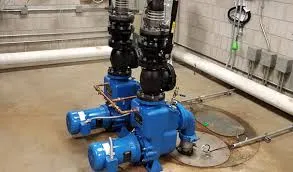English
- Afrikaans
- Albanian
- Amharic
- Arabic
- Armenian
- Azerbaijani
- Basque
- Belarusian
- Bengali
- Bosnian
- Bulgarian
- Catalan
- Cebuano
- Corsican
- Croatian
- Czech
- Danish
- Dutch
- English
- Esperanto
- Estonian
- Finnish
- French
- Frisian
- Galician
- Georgian
- German
- Greek
- Gujarati
- Haitian Creole
- hausa
- hawaiian
- Hebrew
- Hindi
- Miao
- Hungarian
- Icelandic
- igbo
- Indonesian
- irish
- Italian
- Japanese
- Javanese
- Kannada
- kazakh
- Khmer
- Rwandese
- Korean
- Kurdish
- Kyrgyz
- Lao
- Latin
- Latvian
- Lithuanian
- Luxembourgish
- Macedonian
- Malgashi
- Malay
- Malayalam
- Maltese
- Maori
- Marathi
- Mongolian
- Myanmar
- Nepali
- Norwegian
- Norwegian
- Occitan
- Pashto
- Persian
- Polish
- Portuguese
- Punjabi
- Romanian
- Russian
- Samoan
- Scottish Gaelic
- Serbian
- Sesotho
- Shona
- Sindhi
- Sinhala
- Slovak
- Slovenian
- Somali
- Spanish
- Sundanese
- Swahili
- Swedish
- Tagalog
- Tajik
- Tamil
- Tatar
- Telugu
- Thai
- Turkish
- Turkmen
- Ukrainian
- Urdu
- Uighur
- Uzbek
- Vietnamese
- Welsh
- Bantu
- Yiddish
- Yoruba
- Zulu
Telephone: +86 13120555503
Email: frank@cypump.com
Sep . 28, 2024 07:51 Back to list
Optimizing Performance of Slurry Circulating Pumps for Efficient Material Handling Systems
Understanding the Role of Slurry Circulating Pumps in Industrial Applications
Slurry circulating pumps are essential components in a variety of industrial processes, particularly in sectors such as mining, mineral processing, and waste management. Their primary function is to transport a mixture of liquid and solid particles, known as slurry, from one location to another. The efficiency and effectiveness of a slurry circulating pump can significantly influence the overall productivity and operational costs of an industrial system.
Function and Importance
At the core of slurry handling, these pumps are designed to accommodate the challenging characteristics of slurries, including high viscosity, variable consistencies, and abrasive particles. The term 'slurry' typically refers to a heterogeneous mixture, which can include anything from finely crushed ore and water to coal dust mixed with water or other materials. Because of the complexity of these mixtures, slurry pumps are built with robust materials and specific design features to ensure durability and reliability in harsh operating conditions.
In mining operations, slurry pumps are crucial for transporting tailings—waste materials left over after ore extraction. By efficiently moving these materials away from processing plants, slurry pumps help to mitigate environmental impacts and maintain compliance with regulations. Moreover, in mineral processing, these pumps facilitate the movement of slurries through various stages of extraction and refining, ensuring that valuable minerals are not lost during transportation.
Types of Slurry Pumps
There are several types of slurry pumps available, each designed for different applications and types of slurry. Centrifugal slurry pumps are among the most common due to their simple design and ability to handle large volumes of slurry. They utilize rotational energy to move the fluid and are ideal for transporting low-viscosity slurries.
slurry circulating pump

On the other hand, positive displacement pumps are used for higher viscosity slurries or those containing large solid particles. These pumps work by trapping a fixed amount of slurry and forcing it through the pump, making them suitable for various challenging applications.
Factors Influencing Pump Selection
Choosing the right slurry circulating pump involves considering several factors, including the type and concentration of the slurry, the distance the slurry needs to be transported, and the required flow rate. Additionally, the pump's material must be compatible with the chemical characteristics of the slurry to prevent wear and corrosion. Common materials used in the construction of slurry pumps include rubber, high-chrome alloys, and stainless steel, each chosen based on the specific application and environmental conditions.
Other considerations include the pump's efficiency, operating cost, maintenance needs, and overall lifecycle costs. An investment in a high-quality slurry circulating pump may be more costly upfront but can lead to significant savings in maintenance and operational downtime.
Maintenance and Best Practices
Regular maintenance is vital for the longevity and performance of slurry pumps. Operators should establish a routine inspection schedule to check for wear and tear, alignment, and potential blockages. Keeping the pump system clean and ensuring that it operates within the recommended parameters can help prevent costly breakdowns and extend the pump's lifespan.
In conclusion, slurry circulating pumps play a critical role in various industries by ensuring the efficient transport of complex slurry mixtures. Understanding their functionality, types, and best maintenance practices will not only enhance operational efficiency but also contribute to sustainable industrial practices. As industries continue to seek more efficient and environmentally friendly methods, advancements in slurry pump technology and design will undoubtedly drive further innovations in this essential field.
-
ISG Series Vertical Pipeline Pump - Chi Yuan Pumps | Advanced Engineering&Industrial Efficiency
NewsJul.30,2025
-
ISG Series Pipeline Pump - Chi Yuan Pumps | High Efficiency, Energy Saving
NewsJul.30,2025
-
ISG Series Vertical Pipeline Pump-Chi Yuan Pumps|High Efficiency&Reliable Performance
NewsJul.29,2025
-
ISG Series Vertical Pipeline Pump|High Efficiency&Low Noise
NewsJul.29,2025
-
ISG Series Vertical Pipeline Pump - Chi Yuan Pumps Co., LTD.|High Efficiency, Energy Conservation, Low Noise
NewsJul.29,2025
-
ISG Series Vertical Pipeline Pump-Chi Yuan Pumps Co., LTD.|High Efficiency&Energy-Saving
NewsJul.29,2025










